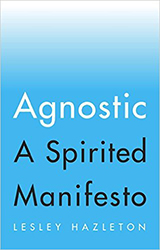Exactly a month after the humongous 9.0 earthquake and tsunami, Japan has finally raised the severity level of the crisis at the Fukushima nuclear power plant from level 5 to level 7. That’s the highest there is.
I guess they could no longer deny reality. Maybe we can’t either.
The decision came after another huge aftershock (6.6) today. Which followed an identically huge one yesterday. And another even larger one (7.1) four days ago. Which makes me wonder what the new definition of “aftershock” might be. The dimensions of the unfolding disaster at Fukushima seem to have had a devastating effect on, among so much else, our ability to react.
Now it’s true that a 7.1 is nothing compared to the 9.0 one on March 11 (reminder: a 9.0 is ten times more powerful than an 8.0, which is ten times more powerful than a 7.0, and so on). But as I write, these ‘aftershocks’ (any one of which would send Seattle into total panic) all seem to be right in the area of Fukushima. Where things have clearly gone not from very bad to worse, but from very bad to worst.
So how come it’s no longer headline news? Have we gotten used so quickly to nuclear disaster? Do we seriously think that because it’s “over there” in Japan it’s not quite real?
Take the word “indefinitely” in this April 6 front-page NYT story, for example. It could mean an indefinite amount of time. It could also mean a very, very long amount of time.
United States government engineers sent to help with the crisis in Japan are warning that the troubled nuclear plant there is facing a wide array of fresh threats that could persist indefinitely, and that in some cases are expected to increase as a result of the very measures being taken to keep the plant stable, according to a confidential assessment prepared by the Nuclear Regulatory Commission.
Among the new threats that were cited in the assessment, dated March 26, are the mounting stresses placed on the containment structures as they fill with radioactive cooling water, making them more vulnerable to rupture in one of the aftershocks rattling the site after the earthquake and tsunami of March 11. The document also cites the possibility of explosions inside the containment structures due to the release of hydrogen and oxygen from seawater pumped into the reactors, and offers new details on how semi-molten fuel rods and salt buildup are impeding the flow of fresh water meant to cool the nuclear cores.
Buried in the very last paragraph of the story is this, from the director of the nuclear safety project at the Union of Concerned Scientists talking about the nightmarish pile-up of problems at Fukushima:
Even the best juggler in the world can get too many balls up in the air. They’ve got a lot of nasty things to negotiate in the future, and one missed step could make the situation much, much worse.
Two days later, and a 7.1 quake hits — a pretty good definition of a missed step — and yet the story is suddenly not on the front page of the NYT, but on page 14, with the scariest part again buried at the end:
At Fukushima No. 2, extremely radioactive material continues to ooze out of the reactor pressure vessel, and the leak is likely to widen with time, a western nuclear executive asserted.
“It’s a little like pulling a thread out of your tie,” said the executive, who spoke on the condition of anonymity to protect business connections in Japan. “Any breach gets bigger.”
Flashes of extremely intense radioactivity have become a serious problem, he said. Tokyo Electric’s difficulties in providing accurate information on radiation are not a result of software problems, as some Japanese officials have suggested, but stem from damage to measurement instruments caused by radiation, the executive said.
In other words, nobody knows what’s happening because there’s so much radiation — those “flashes of extremely intense radioactivity” — that it’s fried the gauges.
Meanwhile, that “extremely radioactive material” keeps oozing out. Into the Pacific Ocean. And into the air. Which means that in an “indefinite” amount of time, it will reach us, wherever we are. And that sounds pretty definite to me.
———————
If you want to see just how many earthquakes there’ve been in Japan since March 11, click here for a horribly hypnotic visual timeline of the size, frequency and depth of the ongoing tsunami of quakes (it comes courtesy of a researcher at the University of Canterbury in, no coincidence, Christchurch, New Zealand). You can follow every one since March 11, when the 9.0 lights up the whole screen, or click on the upper right-hand corner for any date you select.




Jesus, is there anyone else out there besides you and KPFA Pacifica Radio who is on top of this horrific disaster? What kind of $ power does the nuclear coalition wreak over the media? Huge thanks for trying to keep this issue above the radar. Never doubt that a small group of people…..
Yes — interesting how that business executive “spoke on condition of anonymity to protect business interests in Japan.” Sigh. And that today, the print edition of the New York Times runs the report on the Level-7 alert on… page 12.
On NPR’s Wait, Wait Don’t Tell Me a few days ago, they ran a REAL Japanese animated TV spot referencing the meltdown probs as follows:
The young school child has a tummy problem and is farting. That’s OK but if he poops, we’re all in deep doo doo. (Complete with sound effects.) OY!